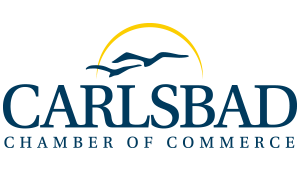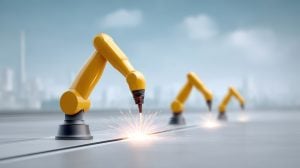Welding torches, woodshops, and real-world wisdom
Sparks fly in welding bays, the scent of fresh-cut lumber fills the air, and the hum of real-world creation. In Carlsbad, the future of education doesn’t just hum with the glow of screens and artificial intelligence. It clanks, sparks, and grows hands-on. Amid national buzz about tech careers and digital fluency, a quieter, steadier movement is gaining traction: trade education.
At Carlsbad High School, Career Technical Education (CTE) faculty have seen firsthand how students are energized by hands-on experiences, whether it’s in woodshop or construction, much like others might be in robotics. The goal isn’t to push students into one track or another, but to offer meaningful choices that reflect their interests and strengths.
Today’s cutting-edge, rigorous, and relevant CTE pathways prepare students for a wide range of high-wage, high-skill, and high-demand careers.
In 2025, more students in North County are leaning into pathways that build not just resumes but real life. Programs in culinary arts, medical tech, automotive, and green construction are surging. These aren’t the “backup” plans of a decade ago. They’re deliberate first choices, rooted in stability, purpose, and pride.
Pacific Ridge School still offers its signature roundtable discussions, and Seaside Academy’s project-based models attract creative thinkers, but now, even traditional schools are borrowing from the playbook of apprenticeships and hands-on learning. The district’s WorkAbility program partners students with local employers to explore life after graduation, not just life after finals. “This generation wants to work on the world, not just in it,” says one teacher. “They crave skills that matter.”
STEAM labs are flourishing in elementary schools. Not just coding and design, but agriculture, marine science, and environmental restoration. It’s the how and why that drive these programs forward. As one student said after a class at the Agua Hedionda Lagoon Foundation: “I didn’t know biology could smell like salt and mud.
That’s when it clicked.” Cultural shifts are part of the story, too. With rising costs of four-year degrees and uncertain ROI, parents and students are reevaluating what success looks like. And in Carlsbad, success increasingly looks like welding certifications, EMT credentials, and sustainable horticulture classes alongside AP Physics.
Why does it matter for Carlsbad families? Hands-on satisfaction: Students respond viscerally to trade learning, “it clicks”, as one welding participant in the region put it. “We’re looking closely at how we can better prepare students for the future of skilled trades,” says Godfrey Gibbison, PhD, Dean of Extended Learning & Associate Vice President for International Programs at California State University, San Marcos.
“This isn’t just a response to AI, it’s about meeting North County where they are, and helping them access good, family sustaining jobs without the long runway or cost of a traditional degree.”
He explained that new technologies like solar, wind, and electric vehicles are reshaping what “trade work” even means. As legacy systems give way to cleaner, smarter alternatives, there’s a growing need for maintenance and technical specialists who can keep this new infrastructure running.
“These jobs aren’t always about building the future, they’re about maintaining it,” he said. “We’re trying to think ahead to get ahead of that curve.”
Unlike multi-year degrees, these evolving programs would be shorter, more affordable, and designed to get people back into the workforce quickly, filling gaps in the labor market while building local talent that’s ready to adapt with the times.
MiraCosta College’s Technology Career Institute is also offering accelerated, hands-on training programs that are built to get students into the workforce quickly. With a focus on in-demand fields like HVAC, electrical, and clean energy, TCI is helping meet the growing need for skilled trades while offering a fast, direct path to a career.
In the rush toward all things AI, it’s easy to forget the value of work done by human hands until the pendulum begins to swing back. The rise in trade programs isn’t a rejection of technology, but a reminder that progress doesn’t mean leaving behind what’s real, tangible, and essential. Even writing this article: AI helped, sure—but to get the story right, I had to speak with someone, listen, ask follow-ups. Some things still need direct human contact to be done well. And maybe that’s the clearest signal for the kind of future worth building—one that blends innovation with human connection, and balances the digital with the deeply practical.
Maybe the biggest trend isn’t a trend at all—it’s a return. A return to purpose. To learning with your hands, heart, and head in sync.
In the quiet revolution happening across Carlsbad classrooms, the question isn’t “What job do you want someday?” but: What do you want to build and who do you want to become?

